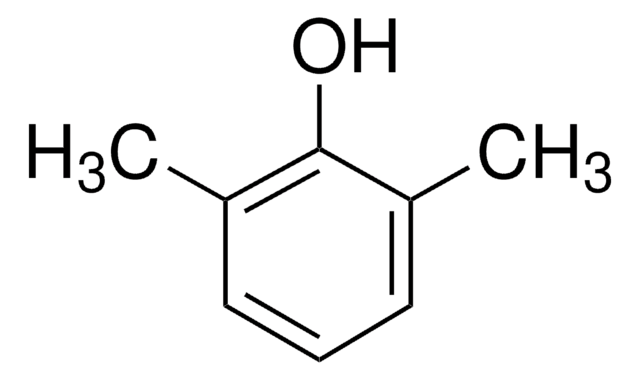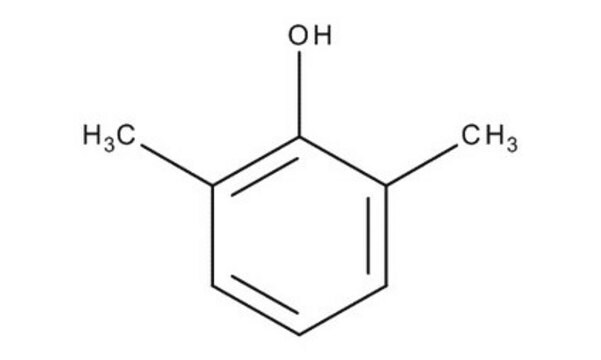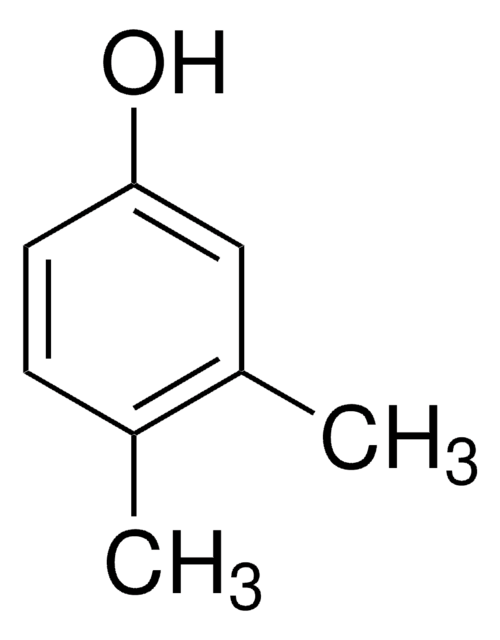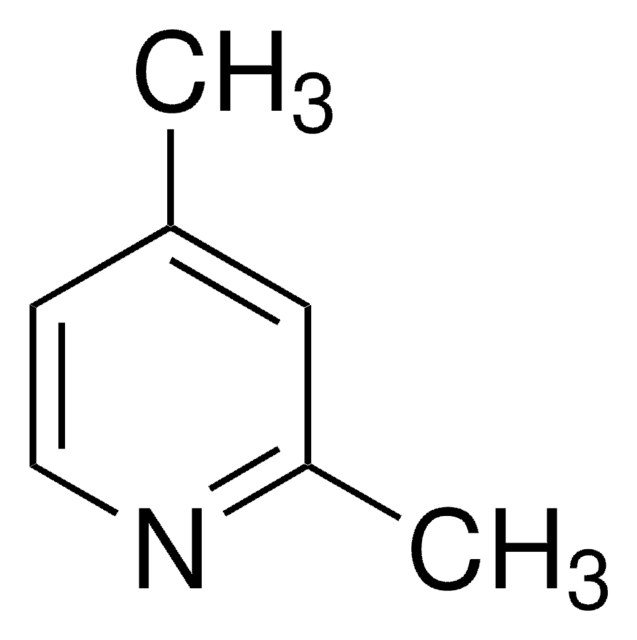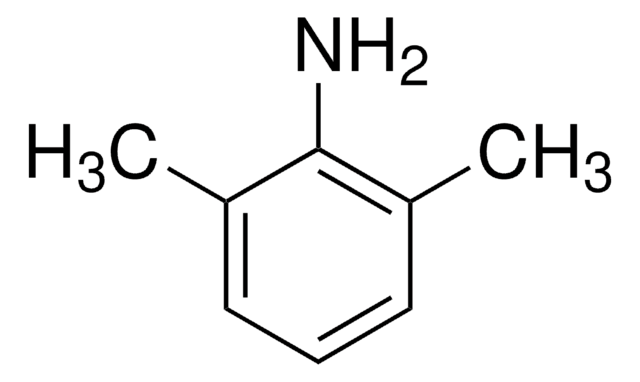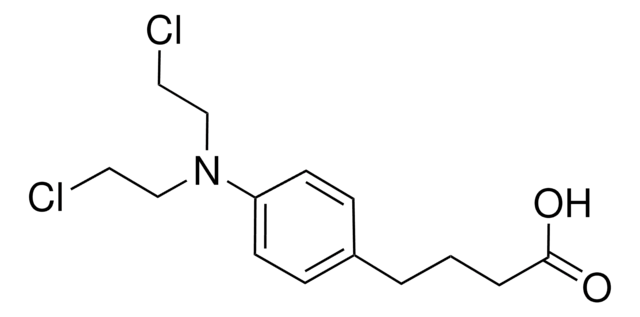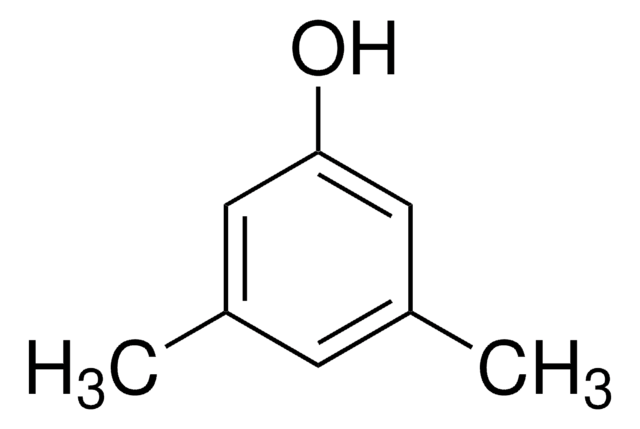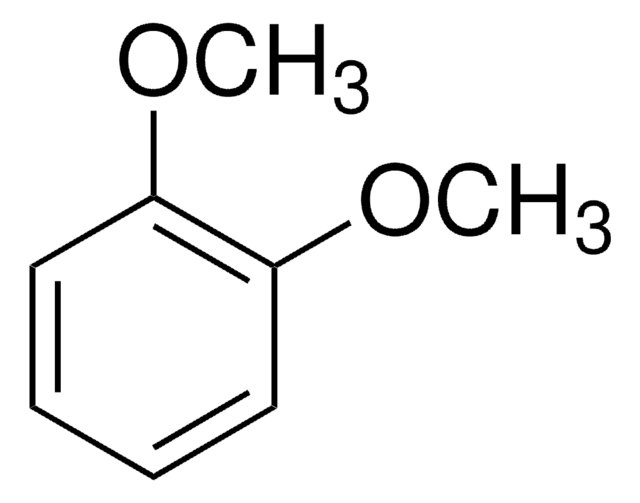W324906
2,6-Xylenol
≥99%, FG
Synonym(s):
2,6-Dimethylphenol, 2-Hydroxy-m-xylene, vic.-m-Xylenol
About This Item
Fragrance grade
Halal
meets purity specifications of JECFA
Recommended Products
biological source
synthetic
Quality Level
grade
FG
Fragrance grade
Halal
Agency
follows IFRA guidelines
meets purity specifications of JECFA
reg. compliance
EU Regulation 1223/2009
EU Regulation 1334/2008 & 178/2002
Assay
≥99%
autoignition temp.
1110 °F
bp
203 °C (lit.)
mp
43-45 °C (lit.)
application(s)
flavors and fragrances
Documentation
see Safety & Documentation for available documents
food allergen
no known allergens
fragrance allergen
no known allergens
Organoleptic
medicinal
SMILES string
Cc1cccc(C)c1O
InChI
1S/C8H10O/c1-6-4-3-5-7(2)8(6)9/h3-5,9H,1-2H3
InChI key
NXXYKOUNUYWIHA-UHFFFAOYSA-N
Gene Information
human ... GABRA1(2554)
Looking for similar products? Visit Product Comparison Guide
Application
- Methodological Considerations of the Acetaminophen Detection : This study explores the use of 2,6-Xylenol in the detection of acetaminophen through the indophenol reaction, highlighting its importance in forensic science and toxicology for accurate drug testing (Shinkawa et al., 2023).
- Carbon Dioxide Solubility in Nonionic Deep Eutectic Solvents Containing Phenolic Alcohols: Investigates the solubility of CO2 in solvents containing 2,6-Xylenol, underscoring its potential in capturing and storing carbon dioxide, which is vital for combating climate change (Alhadid et al., 2022).
Signal Word
Danger
Hazard Statements
Precautionary Statements
Hazard Classifications
Acute Tox. 3 Dermal - Acute Tox. 3 Oral - Aquatic Chronic 2 - Eye Dam. 1 - Skin Corr. 1B - STOT SE 3
Target Organs
Respiratory system
Storage Class Code
6.1A - Combustible acute toxic Cat. 1 and 2 / very toxic hazardous materials
WGK
WGK 3
Flash Point(F)
186.8 °F - closed cup
Flash Point(C)
86 °C - closed cup
Personal Protective Equipment
Choose from one of the most recent versions:
Already Own This Product?
Find documentation for the products that you have recently purchased in the Document Library.
Customers Also Viewed
Our team of scientists has experience in all areas of research including Life Science, Material Science, Chemical Synthesis, Chromatography, Analytical and many others.
Contact Technical Service